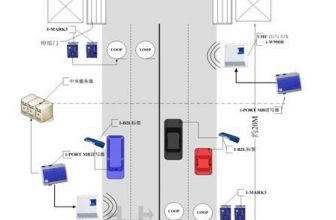
The Brazilian Air Force uses RFID to enhance military material management capabilities
[ad_1]
At present, the Brazilian army has used radio frequency identification technology to manage military supplies. The No. 21 reserve warehouse in Sao Paulo has begun to apply RFID technology to manage military supplies. The military supplies managed include uniforms, tents, helmets and boots.
The Brazilian army started using radio frequency identification projects as early as 2005. At that time, an associate professor of the Military Engineering Association was working on the subject of tracking military parachutes through radio frequency identification tags. After testing 3000-5000 parachutes (the parachutes have been pre-installed with radio frequency identification code tags), RFID technology has begun to be applied to the management of military supplies.
The military tested a large number of reading and communication equipment, but finally chose to deploy the entrance, including the metal structure archway. There are more than ten entrances, each with two readers and 8 antennas installed in various positions. By identifying the tags of each location, the military can track the delivery status of the goods, such as storage location and transportation time. This information will eventually be recorded in the sealing technology software.
The supplier adds EPC Gen 2 UHF tags to the product. When trucks unload these products at the logistics center, the tags are identified through the radio frequency identification entrance, thus indicating that the goods have been delivered. Every item (like a pair of boots) and every container will have an EPC Gen 2 attached to it to encode an identity tag. The item code corresponds to the code of the container in which it is located.
Some other entrances are installed at the exits of the diversified storage area in the center, and the software will be updated as the goods pass through the entrances. In order to show where the item was shipped.
Through the testing of the past year, the biggest benefit of radio frequency identification technology is to enable the Brazilian Air Force to track items quickly and accurately. By providing an electronic recording method of radio frequency identification reading and marking, it has ensured that the efficiency of the Brazilian army’s military supplies receiving process has been improved. When the garment is received in the warehouse, the staff will use Motorola’s solution MC 9090 handheld identifier to track the label of the loaded container and the garment on the pallet. When shipping, the pallets will pass through Motorola XR450 radio frequency identification device, and the data will be stored in the empty database through software.
[ad_2]




